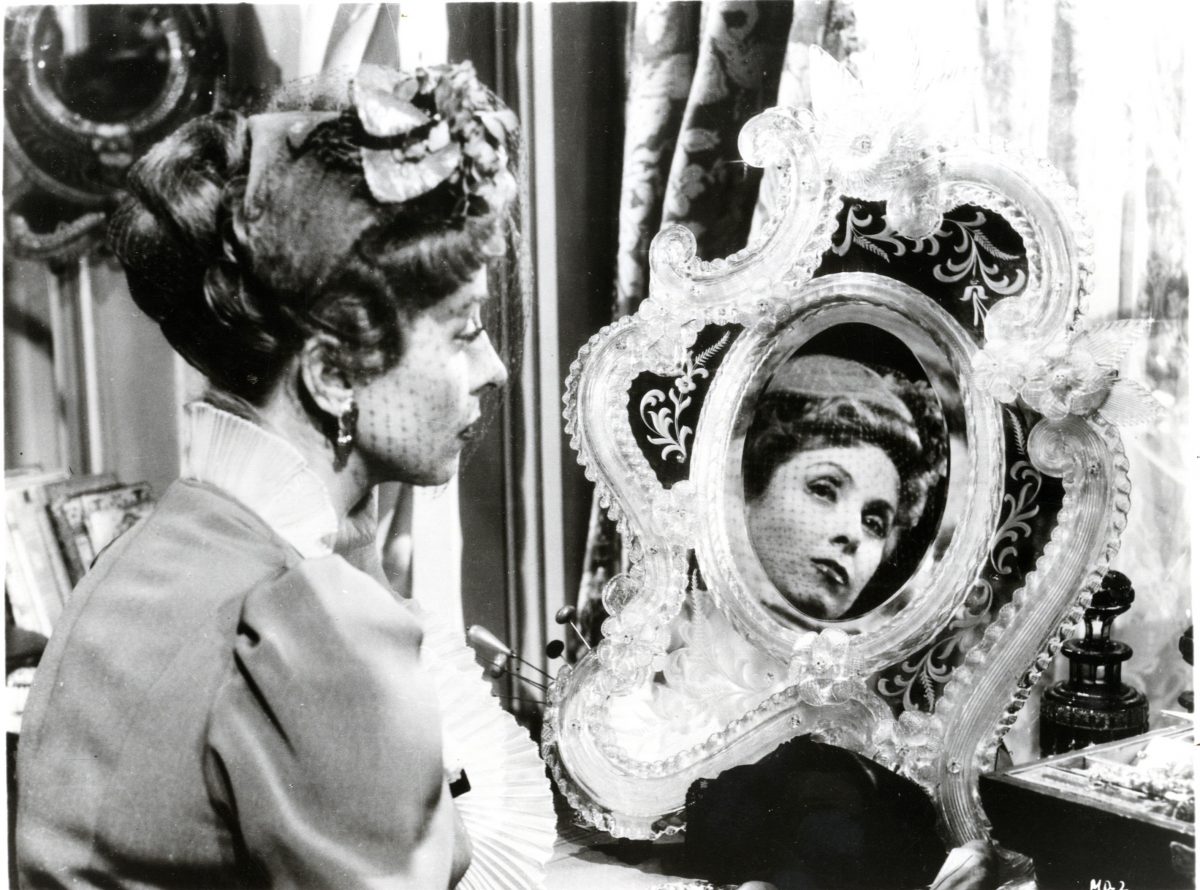The Earrings Of Madame De

Max Ophüls
France – 1953

Screenplay: Marcel Achard, Max Ophüls, Annette Wademant
Cinematography: Christian Matras
Production: Franco London Films, Indusfilms, Rizzoli Film
Language: French, Turkish
Duration: 100 min
Color: Black and White
Synopsis: In the Paris of the late 19th century, reckless Countess Louise, wife of General André, sells the earrings her husband gave her as a wedding gift to the jeweler M. Rémy to pay her debts. She lies to her husband that they were lost in the theater and he is about to call the police when M. Rémy visits his client and discloses the truth about the earrings. The General secretly buys the earrings again and gives them to his mistress, Lola, who is about to depart for Constantinople. Over there Lola gambles them away and they are picked up by an Italian diplomat, Baron Donati, who sees them in a shop window. Back in Paris, Donati meets Louise and they become lovers. He gives her the earrings, and Louise offers her husband another lie as an explanation: they were not lost in the theatre, she had misplaced them in a drawer. Seeing his mistresses’ earrings mysteriously reappear back in his wife’s possession, along with Louise’s blatant deceits, arouses the General’s jealousy and pride with tragic consequences.
Notes: Ophüls’s version of Madame de… confirms that, above and beyond stories of romantic passion, he was interested in creating opposing iconographies of masculinity: on the one hand, a “feminized” man, a man who loves love, a “womanizer”; on the other hand, a husband who personifies the “law,” a representative of military and aristocratic “order.” Whereas the lover introduces the drive of desire into the story, the husband interrupts it with the drive of death. The conflict of opposing masculinities is ultimately played out off-screen in the duel, but it gets its fullest treatment in the scene in which the general confronts the ambassador with a series of insults that cannot but lead to a duel. Donati lounges in a chair, a cigarette in the corner of his mouth, while the general stands fully erect in his uniform and military accoutrements. Ultimately, the duel returns the story to the world of men; Louise and her love are marginalized, a process which is prefigured by Louise’s response to the amazing reappearance of the earrings.
There’s little doubt that Madame de… is a tour de force that would have been impossible if a strong director did not have the support of equally strong collaborators. Key members of the team assembled for the last four French films: cinematographer Christian Matras, set designer Jean d’Eaubonne, and the costume designer Georges Annenkov outdo themselves. An excerpt from Annenkov’s 1962 book, “Max Ophüls,” succinctly conveys the schism between the director’s creative team and philistine money men. According to Annenkov, Ophüls bemoaned the fact that “with producers, you can’t talk about taste or what the director is getting at, but only the taste and demands of the ‘general public,’ not form but conformity. This ‘capitalist realism’ is the identical twin brother of ‘socialist realism.’” Ophüls was also efficient at delegating the auteur mandate, underscoring the need for flexibility and inclusion in the creative team: Annette Wademant remarks that fellow screenwriter Marcel Achard was responsible for witty bons mots while she was assigned to capture the female perspective that is obviously such a crucial component of the narrative.
Madame de…’s melodrama comes close to tragedy because Louise escapes the gilded surfaces of her domestic life and sacrifices all, including eventually her life, for love. For some critics, the much-reviled, much-venerated earrings might be discussed within the framework of Marx’s concept of “commodity fetishism,” but an alternative explanation can be found Thorstein Veblen’s 1894 article, “The Economic Theory of Women’s Dress,” where he explains that the cumbersome, nonutilitarian mode of dress imposed upon women continued to mark them as men’s chattel since, at least with wealthy women, ornamental fashion was indicative of their “idleness” and their “adornments” signified the process of both “conspicuous expensiveness” and “the conspicuous expenditure of waste.” From a Veblenesque perspective, it’s arguable that Louise’s flight from opulent idleness, and her attempt to flee the clutches of a genially authoritarian husband, makes her a genuine, albeit incongruous, rebel.
Notes drawn from Mulvey, L. “The earrings of Madame de ..” Film Quarterly 62, no. 4 (January 1, 2009): 16-19. and Porton, Richard. “More Than ‘Visual Froufrou’: The Politics of Passion in the Films of Max Ophüls.” Cineaste 35, no. 4 (Fall2010 2010): 8-13.


